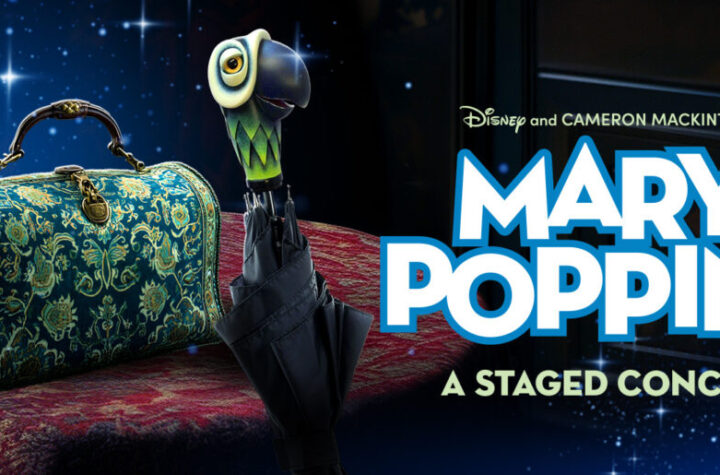
 Highly Recommended! **** My eighth grade English teacher Mrs. Grant would constantly tell us how important it is to revisit great works of literature, because they might speak differently to us during the course of our lives. Such is the case when I watched a recent performance of “Hamlet”, presented by the Invictus Theatre Company at their new home in Edgewater, formerly known as The Frontier. “Hamlet” is one of my favorite Shakespearean tragedies, and I have seen it several times. The oft-quoted line “Something is rotten in the State of Denmark” defines the show in one sentence, and if you must choose a production to see in the near future, this is the one I’d recommend.
Highly Recommended! **** My eighth grade English teacher Mrs. Grant would constantly tell us how important it is to revisit great works of literature, because they might speak differently to us during the course of our lives. Such is the case when I watched a recent performance of “Hamlet”, presented by the Invictus Theatre Company at their new home in Edgewater, formerly known as The Frontier. “Hamlet” is one of my favorite Shakespearean tragedies, and I have seen it several times. The oft-quoted line “Something is rotten in the State of Denmark” defines the show in one sentence, and if you must choose a production to see in the near future, this is the one I’d recommend.
There are not enough words in the English language to describe Charles Askenaizer in his role as the prince of Denmark and as director of the production. So I’ll say in it Danish: Vidunderlig, which means wonderful and extraordinary at the same time! Askenaizer’s quality and depth of acting are the essence of theatre artistry. His manner is beguiling and perfectly timed; his intensity superb. His facial expressions and body language oscillate with his display of wide-ranging emotions as he plays an illusorily mad character who is rational, cunning, and unpredictable to all, even to his closest friend Horatio. Askenaizer also enthralls us in his role as director, having made this highly action-oriented show easily watchable—this despite having a very small stage to work with in this renovated storefront theater. By innovatively using multiple doorways and by deftly shifting the actors around from one location to another, he has created the illusion of space.
Hamlet takes his sighting of his father’s ghost as likely evidence of his father’s murder at the hands of his uncle Claudius (his father’s brother, now King). But his friends Horatio and Marcellus believe this might been a demon out to deceive him. But Hamlet goes with his gut in the belief that the “quick to wed; quick to bed” scenario that describes his mother Gertrude’s quick marriage to his uncle as being “incestuous” and therefore troublesome. While it is clear that their marriage flouted the appearance of conventional morality in Denmark at the time, Hamlet goes one step farther: He is convinced that where there is smoke there is fire and that his uncle’s personal failing is an indicator of some underlying evil in his character. When Hamlet devises a scheme to test his uncle by having him view a play within a play (featuring the ghost’s revealed events that led up to his father’s murder), his purpose is to examine Claudius’s reaction and his possible expiation of guilt. Apparently, Queen Gertrude was blindsided when she trusted her now-husband Claudius as being a fair and decent man and thus was rather too quick to embrace him in more ways than one. These are scenes that still resonate with audiences to this very day.
The casting is extremely well done; all the actors are great; and the characters are all believable (which is not always so easy to achieve). Special note must be made of Ebby Offord who shines in her role as Ophelia with her acting, soulfulness, and singing voice. Other notables include Joseph Beal (King Claudius), Diane Sintich (Queen Gertrude), Darren Jones (Polonius), Michael Lewis (Laertes), Barry Irving (Horatio), Jack Morsovillo (Rosencrantz), Andrea Uppling (Guildenstern), and Chuck Munro (Ghost). Maria Clara Ospina, Robert Koon, and Keenan Odenkirk round out the cast. Glenn Thompson, the fight/intimacy designer, does an incredible job choreographing the sword fights and other close contact among the players. Chad Lussier is both the lighting and sound designer and has put together a technically expert show. And text coach Sarafina Vecchio has gotten all the characters to speak in proficient Elizabethan English. All this put together is quite an accomplishment!
The play is performed 99 percent in modern dress, thanks to costume designer and wardrobe manager Isaac Jay Pineda. I particularly liked the camouflage military uniforms with the Danish flag on them and the actors holding up their modern rifles. Having said that, I would have preferred them in clothing from, say, the 1940s at the very latest. Watching the characters in today’s clothing styles made me think about how the entire script might have been reimagined if this story were theoretically to take place in 2021. How different the presentation of “Hamlet” might have been had the focus been on revealing a toxicology report on the deceased king and providing DNA evidence of the crime and who did it! A slew of news and entertainment reporters and paparazzi would have probably reported on the relationship between king and queen that might sell tabloids or make a name for the gossipmongers on social media, whether any of this was true or not.
In this production of “Hamlet”, there is minimalist set design, and props are few. At one point, however, the props manager should have had the actors show a Danish passport (a burgundy color with a gold crown and seal) rather than an American passport. This mistake is rather noticeable, considering that this intimate theater seats only 44, meaning that every seat in the house is upfront and personal. Another mistake (if you can call it that) is that a 7:30 p.m. show ended at 11:00 p.m., for a running time of 3 hours and 30 minutes, including one intermission. My recommendation for the future is that a performance of this length should start at 7:00 p.m. on a weekday night. As things turned out, I was very lucky that I chose to drive rather than take the “L” (whose station is just a few doors away from the theater). Had I made a different choice, I would have missed my connecting train coming home.
At one point, in answer to Claudius’s question about his nephew, Hamlet’s mother replies that Hamlet is as “Mad as the sea and wind, when both contend which is the mightier.” This is perhaps the most apt metaphor having to do with the day I came to the theater. Before the show, I took a brief walk to the Edgewater lakefront where the tempestuous waves were spilling over the sea wall, and sand was flying into my face due to the stiff wind off Lake Michigan. I was quite a distance away from the fury when I had to turn away from watching the whitecaps to prevent my eyes from getting sandblasted. It was an evening when I don’t think I’d ever seen the lake so agitated or Hamlet’s emotions so enflamed.
“Hamlet” runs through November 21, 2021 at the Reginald Vaughn Theatre, 1106 W. Thorndale Avenue, Chicago, a 1/2 block east of Broadway Avenue. (Note that the theatre is still displaying the old signage that says The Frontier.)
$30 – adults
$25 – students (with valid student ID) and seniors
A $1 fee will be added to the standard ticket price for online or credit card purchases.
Cash payments at the door are not subject to the additional fee.
Performance Schedule:
Mondays, Thursdays, Fridays, Saturdays 7:30 p.m.
Sundays 3:00 p.m.
To purchase tickets, go to: https://www.invictustheatreco.com/tickets.
For more information about this show and other offerings, please visit: https://www.invictustheatreco.com/.
To see what others are saying, visit www.theatreinchicago.com, go to Review Round-Up and click at “Hamlet”.







More Stories
“Mary Poppins : A Staged Concert” reviewed by Julia W. Rath
” I and You”
“Johnny Cobweb” reviewed by Mark Reinecke